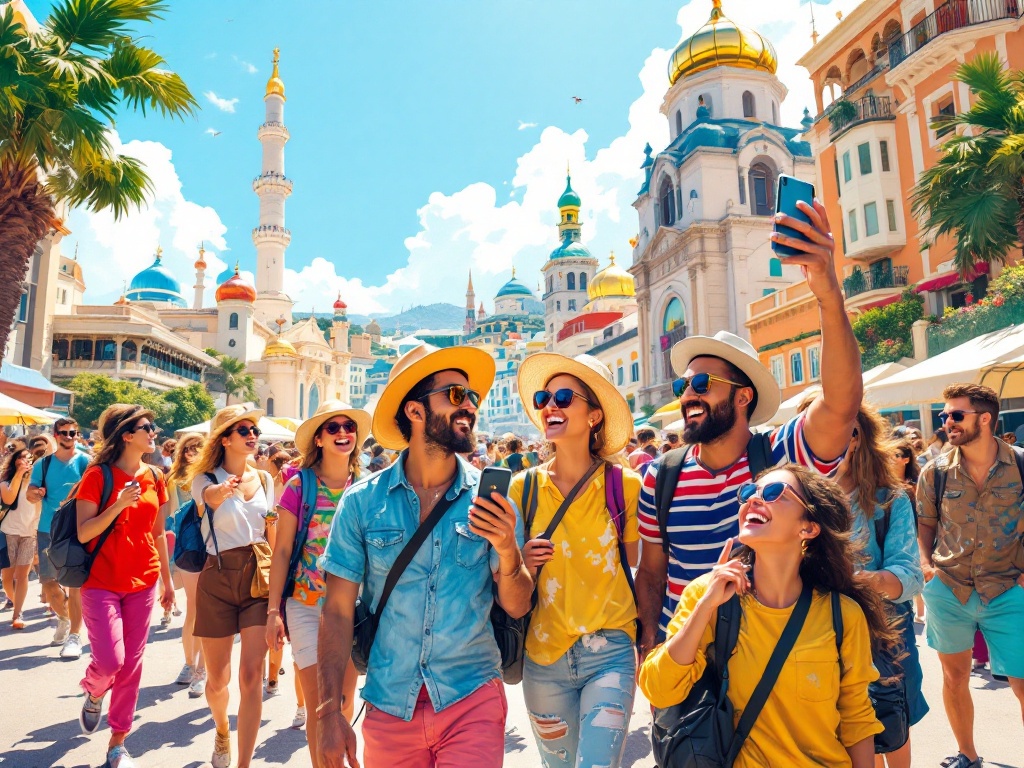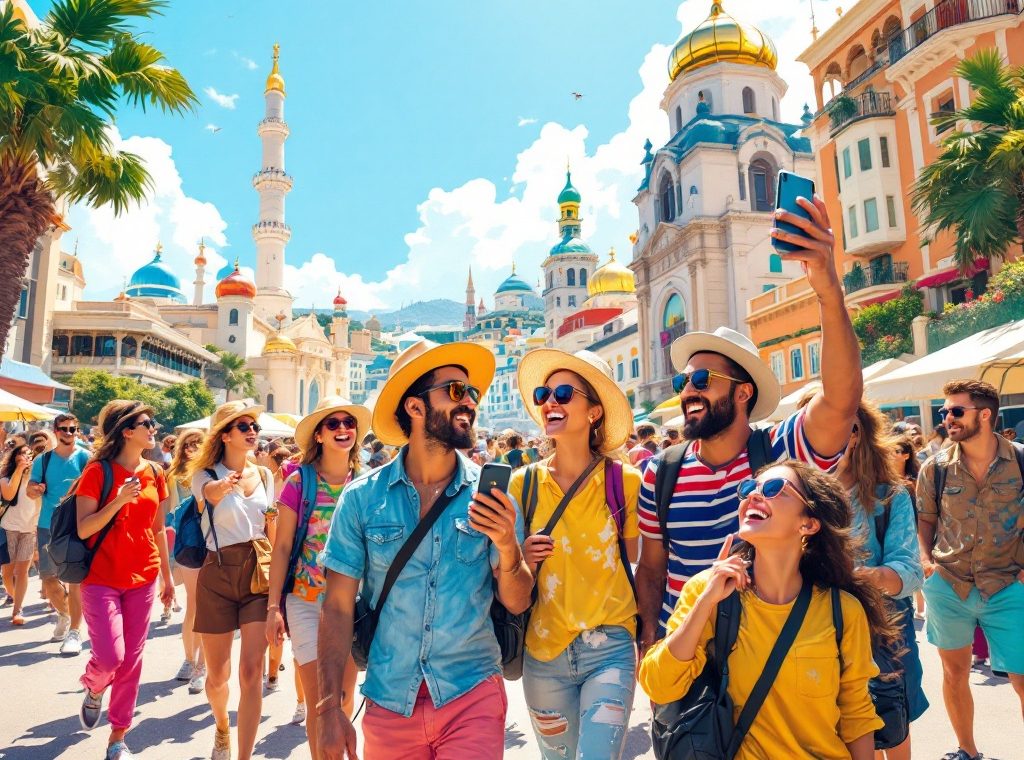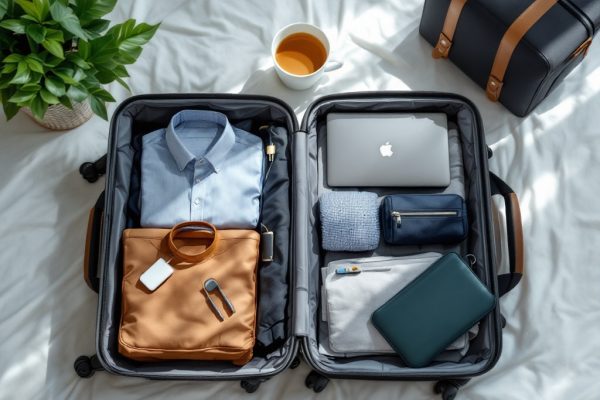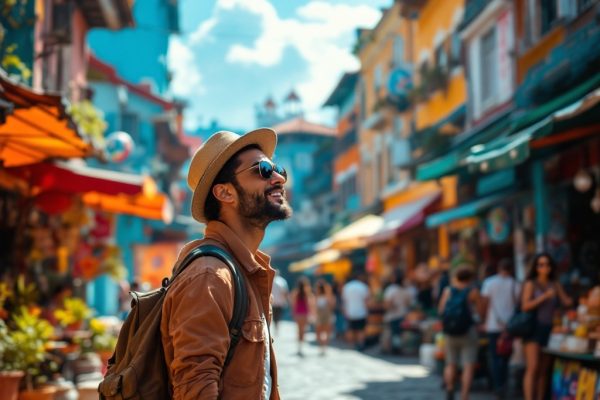Why Do Stereotypical Tourists Stand Out? Travel Behavior Explained
Do you ever wonder why some tourists stick out like a sore thumb? From brightly colored clothes and loud conversations to constant picture-taking, certain behaviors scream “tourist.” This article explores the psychology, cultural influences, and common stereotypes that shape tourist behavior, sometimes leading to misunderstandings and negative experiences. Discover how factors like personal motivations and social influences affect how travelers interact with new environments. Learn practical strategies to blend in, show respect for local customs, and create positive travel experiences for yourself and the communities you visit. Dive in and become a more culturally sensitive traveler!
Important information

- Tourists stand out due to differences in clothing, behavior, and lack of cultural awareness.
- Researching local customs and learning basic phrases demonstrates respect and improves interactions.
- Dressing modestly, respecting traditions, and observing social cues are crucial for cultural sensitivity.
- Supporting local businesses and engaging respectfully with residents enriches the travel experience.
- Mindful actions, like asking permission before taking photos, avoid reinforcing negative stereotypes.
What Makes Stereotypical Tourists Stand Out?
Travelers often stand out, their clothing, manners, and actions differing from local customs. Brightly colored tourist clothing, loud conversations in public, and constant photography can mark them as visitors. These behaviors often come from preconceived notions about their destination and a lack of cultural sensitivity. Influenced by stereotypes, their perceptions can create a disconnect, leading to noticeable, and sometimes offensive, behavior.
Identifiable Behaviors and Appearance
Tourists often document their journeys with countless photos. They converse, sometimes loudly, in their native languages. At times, they may inadvertently overlook local customs. These behaviors can make them easily identifiable. Vivid attire, fanny packs, and the ubiquitous map reinforce the stereotype. These maps, naturally, direct their explorations.
Factors Influencing Tourist Behavior
Personal motivations are key to understanding tourist behavior. Some travelers seek relaxation, while others crave adventure. These psychological factors significantly influence travel choices.
A tourist’s cultural background further shapes their expectations and how they experience new environments. Budget and economic conditions also matter, impacting travel style and limiting destination options.
Social influences, such as recommendations from friends and family, also play a crucial role in shaping travel decisions.
Environmental factors, like unexpected weather, can alter plans and activities. For instance, rain could cancel a hike. Safety concerns are paramount, influencing where tourists go and how they behave once they arrive.
Psychological Factors and Motivations
Your mindset significantly influences your travel experiences. People embark on journeys for a variety of reasons, from seeking relaxation and adventure to connecting with new people and immersing themselves in different cultures. Personal growth also plays a key motivator. Your feelings about a destination shape your actions and interactions. Positive emotions often foster respectful behavior, while negative ones can lead to disengagement and diminish the overall travel experience.
Cultural Influences and Misunderstandings
Traveling sometimes leads to unintentional cultural faux pas. Visitors unfamiliar with local customs can inadvertently display disrespectful behavior, such as wearing inappropriate attire to religious sites or speaking loudly in quiet spaces. These actions reinforce negative stereotypes and create a rift between tourists and residents. Cultivating cultural sensitivity, however, fosters positive interactions and demonstrates respect, enriching the travel experience and promoting understanding. Knowing local customs is key to bridging cultural gaps.
Social Stereotypes and Perceptions
Travelers often arrive with preconceived notions about the locals, influencing their interactions. These assumptions, stemming from cultural differences and stereotypes, can cause misunderstandings and even disrespectful behavior. For instance, a tourist might presume unfriendliness, leading to defensive actions and a self-fulfilling prophecy of negativity. Furthermore, interpreting local customs through their own cultural lens can create additional misinterpretations. This can lead to a negative experience for both the traveler and the local community. Travelers should be mindful of their own biases and strive to approach each interaction with an open mind and respect for the local culture. By understanding and appreciating cultural differences, travelers can foster positive relationships with the people they meet and create more enriching travel experiences.
Improving Tourist-Resident Interactions
Showing respect for local customs is crucial for positive interactions between tourists and residents. Before traveling, tourists should research the destination’s etiquette and learn a few basic phrases in the local language. This small gesture speaks volumes. Observing social cues is equally important, as is respecting local traditions. For instance, dressing modestly at religious sites demonstrates cultural sensitivity. Engaging with residents allows tourists to gain deeper cultural understanding, enriching their travel experience and reducing stereotypical behavior. Ultimately, cultural sensitivity benefits everyone, fostering positive experiences for both tourists and residents alike.
Respectful Interactions
Showing respect for local customs is crucial for positive tourist-resident interactions. Research the destination’s etiquette and learn basic local phrases—a small gesture that speaks volumes.
Cultural Sensitivity
Observe social cues and respect local traditions, such as dressing modestly at religious sites. Engage with residents to gain deeper cultural understanding and enrich your travel experience.
Ultimately, cultural sensitivity benefits everyone, fostering positive experiences for both tourists and residents.
Cultural Sensitivity and Awareness
Respectful travel begins with understanding local customs. Pre-trip research on the culture and a few basic phrases demonstrates respect and paves the way for positive interactions. Observing local traditions is key to truly engaging with residents and gaining a deeper cultural appreciation. Simple greetings can make a big difference, but be mindful of customs regarding physical touch. Dressing modestly at religious sites is another small, yet powerful, gesture that fosters understanding and builds bridges between cultures.
Respectful Interactions with Locals
Immerse yourself in the local culture by respecting customs and traditions. Engage respectfully with residents, demonstrating a genuine interest in their way of life. Learning even a few basic phrases shows you care and goes a long way. Supporting local businesses benefits the community’s economy. Be mindful of social norms, such as dressing appropriately, and avoid imposing your personal beliefs. Cultural sensitivity is paramount in fostering positive interactions and creating a richer travel experience for all. Here are some ways to engage respectfully with the local culture:
- Learn basic phrases: knowing how to say “hello,” “thank you,” and “please” in the local language shows respect and can enhance your interactions with residents.
- Support local businesses: by choosing to eat at local restaurants, shop at local markets, and use local services, you’re contributing directly to the community’s economy and showing your appreciation for their products and skills.
- Respect social norms: be mindful of local customs regarding dress, behavior, and social interactions. Dressing appropriately and avoiding public displays of affection, for instance, demonstrates respect for local sensitivities.
- Engage in respectful conversations: show genuine interest in people’s lives and experiences by asking thoughtful questions and listening attentively. avoid dominating conversations or imposing your own beliefs on others.
- Be open to new experiences: embrace the opportunity to try new foods, participate in local traditions, and learn about the history and culture of the place you’re visiting. This openness will enrich your travel experience and create lasting memories.
Strategies for Travelers to Blend In
Immerse yourself in the local culture before your trip by researching customs and learning basic phrases. This respectful gesture will also simplify communication.
Observe dress codes and blend in by avoiding flashy attire that screams “tourist”.
Moderate your voice and try to mimic local behavior.
Patronize local businesses and restaurants, seeking recommendations from residents rather than relying solely on guidebooks.
Demonstrate respect for traditions by learning about local etiquette, including customs around photography, greetings, and interactions.
Understanding Local Customs and Social Norms
Immersing yourself in local customs enriches the travel experience, fostering deeper cultural connections. Respecting social norms, such as dress codes, public displays of affection, and photography etiquette, prevents misunderstandings and builds bridges with locals. This cultural sensitivity creates a more welcoming atmosphere, leading to positive interactions for both visitors and residents. For a more immersive experience, consider these aspects of cultural sensitivity:
- dress code: adhering to local dress customs shows respect and helps you blend in, making you less of a target for scams or unwanted attention.
- public displays of affection: be mindful of local customs regarding public displays of affection, as what is acceptable in your culture may be considered inappropriate in another.
- photography etiquette: always ask permission before taking photos of people, especially in sensitive or religious locations.
Dressing and Behaving Appropriately
Demonstrate respect through appropriate attire and behavior when traveling. Research local customs beforehand to show cultural sensitivity. For example, dress modestly at religious sites and avoid loud conversations in quiet areas. These gestures show respect and encourage positive interactions with locals. Understanding local norms enhances your travel experience and helps you blend in. Remember that customs vary significantly between locations, so be adaptable.
Adopting Respectful Travel Practices
Learn some basic local phrases. This shows respect and helps support local businesses, boosting the local economy.
Treat cultural sites with reverence. Be mindful of local customs and traditions.
Minimize your environmental impact. Reduce waste and avoid disruptive behaviors, such as excessive noise in quiet areas.
Engage respectfully with locals. Show genuine interest in their culture and experiences.
















